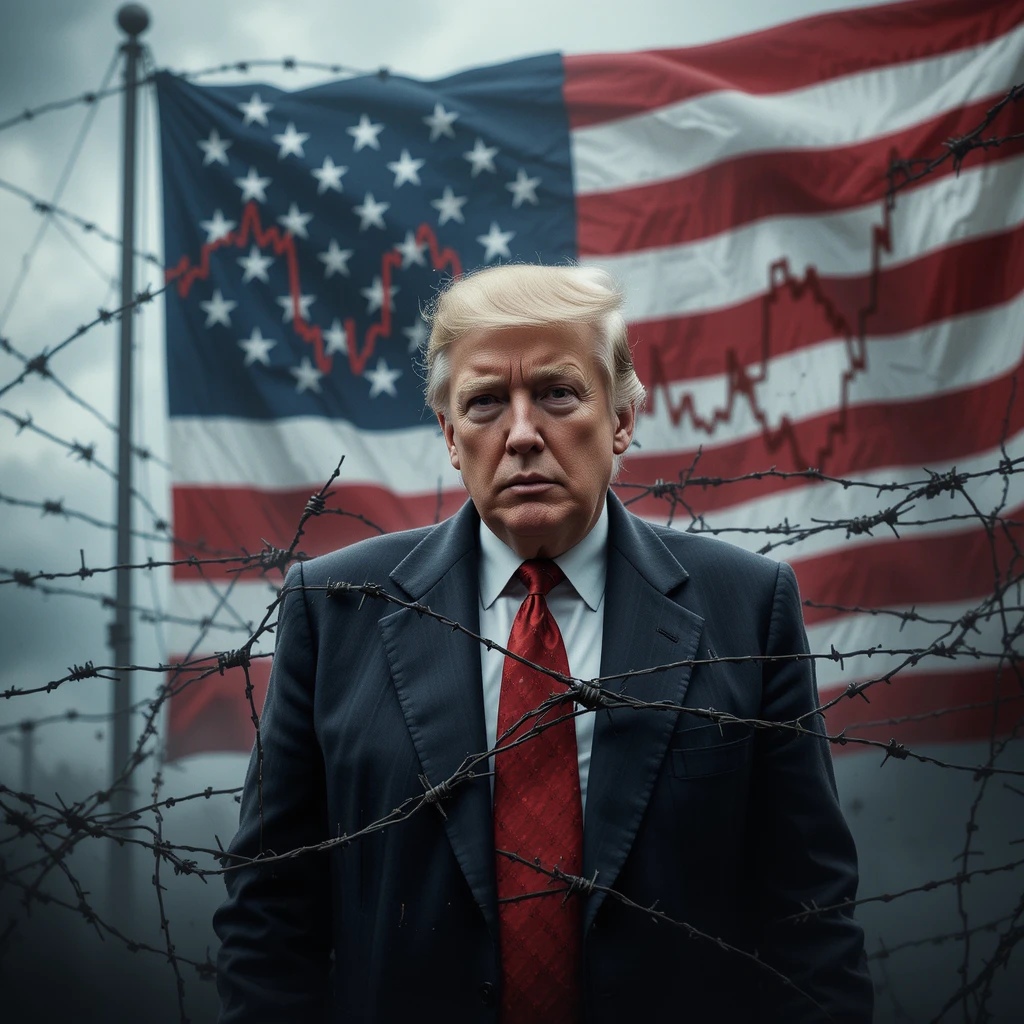The global community is watching with a mix of disbelief and apprehension as former U.S. President Donald Trump intensifies his trade policies; pushing tariffs to unprecedented levels. With sweeping new tariffs targeting imports from China, Japan, and the European Union; the world is left to wonder: how much economic pain is Trump willing to endure to achieve his goals? The consequences of this aggressive trade stance are beginning to unfold; creating waves of uncertainty in both domestic and international markets.
Trade Wars and Economic Realities: A Double-Edged Sword
The new tariffs are the latest in a series of moves that aim to protect American industries from foreign competition. While the administration’s stance is framed as putting “America First”; the immediate impact on financial markets tells a different story. On the day of the announcement; the S&P 500 fell by over 4%; while the Dow Jones and Nasdaq followed suit with sharp declines.
Economists warn that this aggressive approach could backfire; as retaliatory tariffs from key trading partners might push the U.S. into an economic downturn. Historically; protectionist policies have rarely produced the intended economic boosts; and the risk of recession looms larger than ever. As consumer prices begin to rise and businesses struggle to maintain profit margins; the impact on everyday Americans may be more severe than anticipated.
Financial Markets in Chaos
Financial markets are reeling from the unexpected policy shifts; investors are scrambling to reallocate their portfolios; seeking safe havens amid the turbulence. Gold prices have surged as risk-averse investors flock to commodities; while major tech companies and retail giants see their stock values plummet.
The technology sector is especially vulnerable; as companies like Apple and Tesla heavily depend on imported components from China and Japan. Retail giants such as Walmart and Target are also feeling the pinch; with imported goods becoming significantly more expensive. The uncertainty has led to a spike in market volatility; with investors bracing for prolonged instability.
Political Motivations and Public Sentiment
While the economic consequences are becoming clear; the political motivations behind Trump’s strategy remain complex. Some analysts argue that the tariffs are a strategic move to gain leverage in trade negotiations; particularly with China. However; others view it as a populist gesture aimed at appealing to his political base; who view globalization with skepticism and prefer a strong domestic manufacturing sector.
Yet; public sentiment appears divided. While some support the idea of reclaiming American industry dominance; many are increasingly worried about the personal cost of such policies. As household budgets stretch thin and consumer confidence dips; questions about the long-term viability of this approach grow louder.
The International Backlash: Allies and Adversaries
One of the most significant consequences of Trump’s aggressive trade stance is the damage to international relationships. Countries affected by the tariffs are not standing idle; China has already announced reciprocal tariffs; targeting American agricultural products and automotive exports; while the European Union is considering similar countermeasures. This tit-for-tat strategy risks spiraling into a full-scale trade war; threatening global economic stability.
Japan; one of the affected nations; has expressed dismay at the sudden increase in tariffs; warning that the U.S. risks isolating itself economically. As global leaders convene to discuss the fallout; it becomes increasingly evident that the world’s largest economy may inadvertently push its closest allies into forming new trade alliances that exclude the United States.
Economic Theories and Real-World Consequences
The Myth of Trade Deficits
One of the central arguments behind Trump’s tariff policies is the notion of reducing trade deficits. However; many economists argue that focusing solely on deficits is misguided. Trade deficits do not inherently indicate economic weakness; rather; they often reflect a robust consumer-driven economy where imports supplement domestic demand.
Moreover; targeting trade deficits without considering the nuances of modern global supply chains can be counterproductive. For instance; American companies that manufacture products abroad may face higher costs; leading to job losses and price hikes domestically. This contradictory effect highlights the challenges of applying outdated economic theories to the complexities of a globalized economy.
Potential Long-Term Impacts
If the tariffs persist; they could permanently alter the economic landscape. Companies may relocate manufacturing to avoid tariff costs; potentially benefiting countries like Vietnam and India. Conversely; American consumers might turn to alternative products; reducing demand for previously popular imports. These shifts could lead to lasting changes in trade patterns; with the U.S. losing influence over international markets.
What Comes Next?
Financial experts are advising investors to stay vigilant and diversified during this period of heightened uncertainty. Strategies like investing in government bonds and commodities can help mitigate risks. Additionally; staying informed about geopolitical developments and trade negotiations will be crucial for making sound financial decisions.
Experts Weigh In
According to Bloomberg; the tariff policy is “more of a political gamble than a sound economic strategy.” Analysts predict that if the global backlash intensifies; the resulting economic damage could undermine Trump’s efforts to solidify his legacy as a champion of American industry. Meanwhile; the Federal Reserve is closely monitoring the situation; as inflationary pressures could prompt further interest rate hikes; adding yet another layer of complexity to an already volatile market.
Navigating the Turbulent Waters
As the world looks on; the question remains: How much economic pain is Trump willing to endure to achieve his vision of a stronger American manufacturing sector? The answer may lie not in rhetoric but in how the markets and voters respond to prolonged financial instability. Investors and citizens alike must prepare for a long and uncertain road ahead; where strategic patience and diversification may be the keys to survival.

